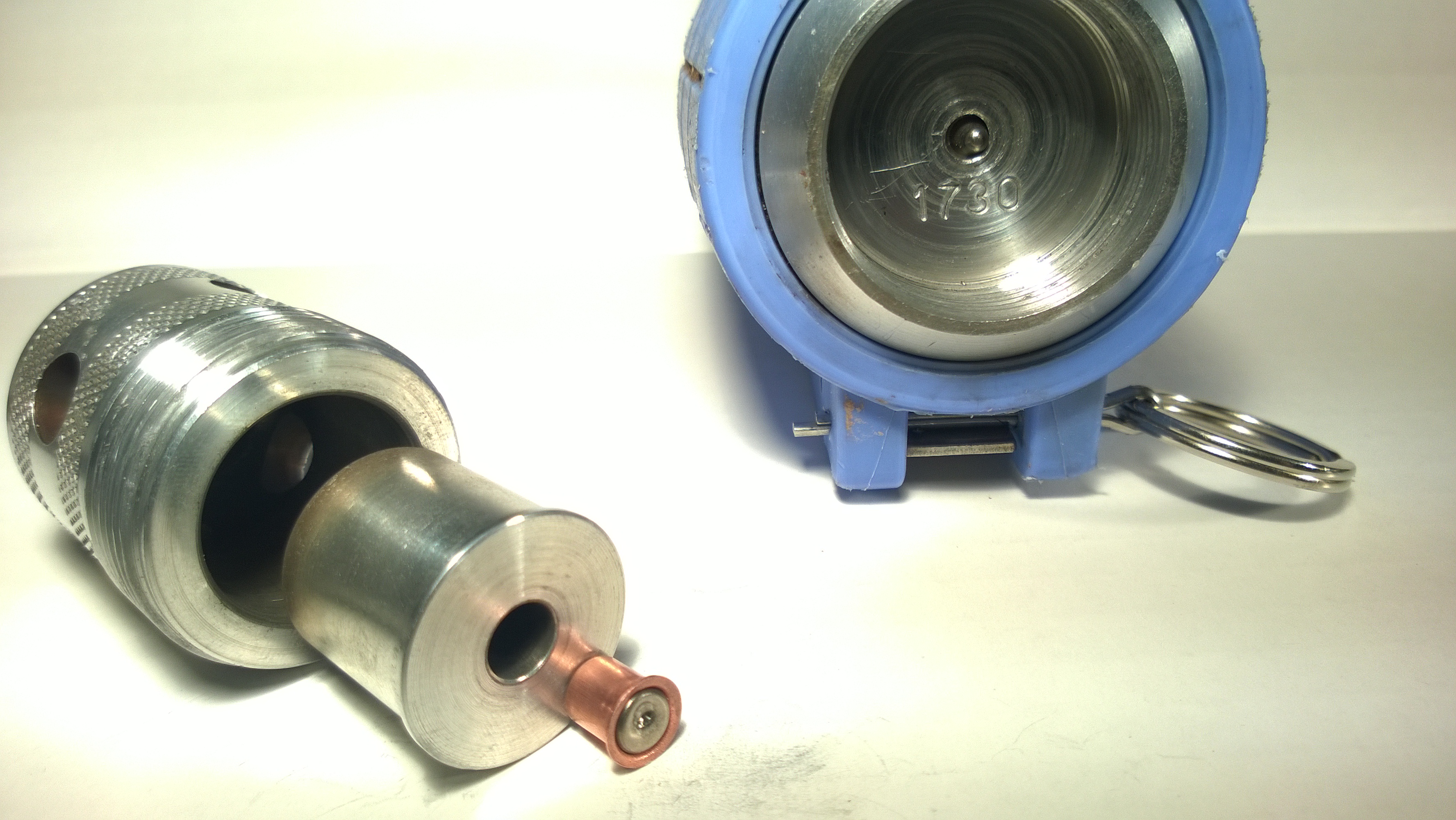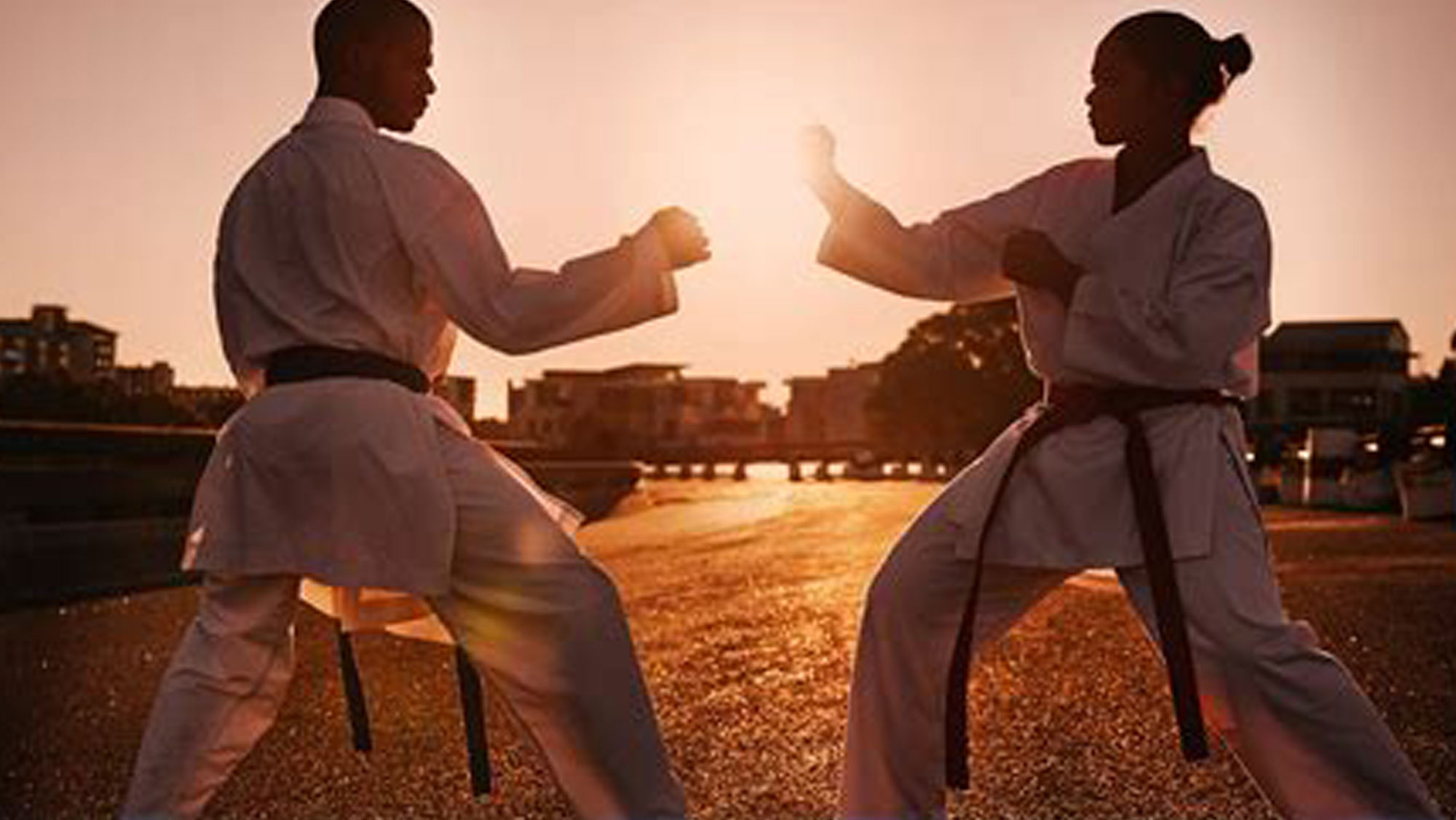By Ryan Penny
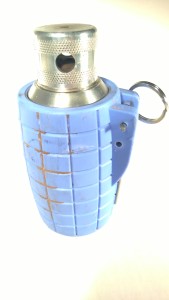
Are you looking for an effective yet economical training grenade solution? The Versatile Training Grenade or V.T.G. manufactured by S.W.A.T Training Devices Limited out of the United Kingdom might be what you are looking for. I have had the V.T.G. grenade version 1 for about three years now and so far it is holding up very well minus a few minor scrapes and dings from use. It weighs in at about 10.38oz which is pretty close to an M67 in weight at 14oz, so it has a decent enough mass for a simulation grenade.
Construction is made out of aluminum which is encased in a polymer casing that is sold in different colors to meet your needs. I opted for the blue color since it is usually the color used to denote training devices and it also helps make the device easier to spot if thrown into an area with overgrown vegetation as compared to the darker colors. The spoon and retention pin are made of a durable steel which appears to be holding up very well under normal use, with no bends or other deformations.
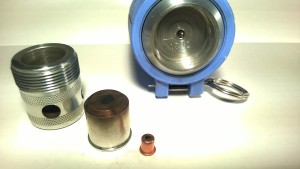
The beauty of the VTG grenade is its reliability. The thing is just a work horse. I have struggled and witnessed countless others struggle with other grenade options where they fail to detonate consistently. With the V.T.G. I never worry about a failed detonation. It goes off every time all the time.
To reload the grenade all you do is unscrew the cap. Remove the spent blank casing, the casing may or may not free fall out and in the case it doesn’t fall free on its own you can use your reloading tool that comes with the grenade to push the casing out. After the spent casing is removed, simply add a new blank casing to the cap.
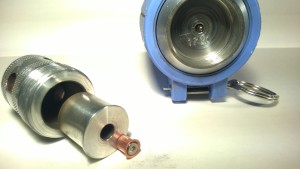
Next you will need to reset the firing pin mechanism in the grenade. To do this you hold the grenade in one hand and with the loading tool in the other you place the tool on the firing pin and firmly press the tool down until the firing pin is fully seated down. With the pin fully seated you then hold down the spoon and remove the loading tool. Keep the spoon depressed and insert the locking pin to hold the spoon in place. Finally screw on the cap with a new blank and you are good to go. Again, what sets this system apart from other units for me is the reliability, it just works.
The unit comes with adapters for 0.209 shot gun primer, .380 short blank and 12-gauge short cartridge which produce about 68 decibels, 120 decibels and untested decibels respectively. This system is nice because it allows you to easily adapt the unit to meet your needs. The manufacturer also makes a 9mm pax adapter that can be purchased separately for those who wish to use the slight larger 9mm blank as compared to the .380 short. Seen below is the 0.209 blank adapter which fits into the main cap.
Some people have expressed great concern that the grenade expels a flame and could cause a fire. It is true the device produces a flame and there is always a potential for a fire, so deploy accordingly. Although even with a flame, the cap is cool to the touch immediately after use. The flame is very brief and doesn’t place enough heat long enough to heat up the metal parts of the grenade to become a secondary source for ignition, especially as compared to other systems that are an explosive firework. Those firework systems appear to have the potential to create fires more easily as they generate a lot of intensive heat over a much larger area. As the end user it is up to you to ensure you use the right tool for the job. If the fire risk is high, you might look at alternative systems that do not generate a flame at all.
After many uses I have noted a few potential issues depending on conditions. I have found that if the grenade hits the ground too hard, the jolt can result in the grenade going off on impact instead of counting down for the full 3 second delay. This isn’t necessarily a bad thing depending on what you are using it for. If it is for training purposes, that could be looked as a negative because the delay could be negated. If it is for airsoft use, then that might be a positive since the quick detonation could prevent people from running to cover, it just depends on the user and their preferences.
One other aspect to be aware of is that I have witnessed two occasions where other people have had issues when the threaded cap had become stuck after use which required a vice or a pair of channel locks to assist in removing the cap. I have personally only had it happen to myself once and from what I can tell it was my fault. Be sure to avoid cross-threading the cap by first turning it counter clockwise until you feel the threads seat, and then clockwise to close it up.
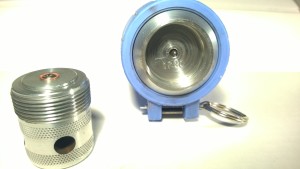
I believe that when I prepared the device, I didn’t thread the cap all the way down to be fully seated. I had noticed the cap was not fully threaded in by about two threads. This may have allowed debris to get in between the threads resulting in the cap to become too tight for me to remove by hand after use. I had to use a vice at home and some WD-40 to assist me in removing the cap. But once I removed it, it still threads on like new and I have not had any further issues to date. Up to that point I have never done any maintenance to the unit, so I recommend to clean the threads every once in a while to keep them clean and free of debris.
Finally let’s look at a cost analysis of different type of grenade systems and their operating costs over a number of uses. Below is a quick reference chart which shows the base cost to operate, no shipping costs were included.
|
Operating Costs (assumes no shipping) | |||||
| Grenade Type |
Startup Cost |
Startup Cost plus 25 shots |
Startup Cost plus 50 shots |
Startup Cost plus 100 shots |
Startup Cost plus 200 shots |
| Pea Grenade ver2 |
$5 |
$125 |
$250 |
$500 |
$1,000 |
| Pea Grenade ver3 |
$11.48 |
$287 |
$574 |
$1,148 |
$2,296 |
| Thunder B |
$41 |
$64 |
$108 |
$195 |
$391 |
| VTG with .209 primer adapter |
$94.60 |
$96 |
$98 |
$101 |
$107 |
| VTG with 9mm pax adapter |
$113.52 |
$123 |
$133 |
$152 |
$191 |
| VTG with 12-gauge short cartridge |
$94.60 |
$120 |
$143 |
$191 |
$287 |
If you look at the chart you can see although the initial cost for the Pea-grenades are cheaper at the beginning, the cost dramatically increases the more you utilize them since they are a onetime use item. The Thunder B is in middle of the pack for startup costs and even though the price increases with more use, the overall rate of increase is manageable. Then if you look at the V.T.G. you can clearly see it has the highest initial startup cost by far but if you look at the long term operating cost and the three options that it can provide, you can see where the Versatile Training Grenade really shines.
The 0.209 adapter is easily the cheapest route as long as the 68 decibels it produces meets your needs. If you want something a bit louder and comparable to the Thunder B, the 9mm and 9mm adapter is not a bad alternative for continuing operating cost, especially if you couple the grenades reliability into the equation. Then if 120 decibels are not enough for you, you have the 12- gauge short cartridge option. The 12-gauge option is still comparatively less expensive in the long run compared to the alternatives.
But what should you do with all this information? Well, that is entirely up to you and your needs. If you are looking for a true explosive training grenade, one of the Pea-grenade versions is the best option for you. If you are looking for a middle of the row in terms of a cost solution and a device that has no pyrotechnics and no fire danger, then the Thunder B is a good solution. If you are looking for a reusable and adaptable training device with a low operating cost in the long run, S.W.A.T Training Devices’ Versatile Training Grenade could be a great option to consider. In any case, identify and prioritize your training needs and see which training grenade solution is the best fit for you.
For more information on the Versatile Training Grenade visit http://www.blankfiringgrenade.com/.
Below are is the pricing I used to make these basic pricing assumptions.
Pea Grenade ver. 2- $5 http://www.tlsfx.co.uk
Pea Grenade ver. 3- $11.48 http://www.tlsfx.co.uk
Thunder B
Core plus 12 shells $35 =2.91 http://www.evike.com
12 Shells $15 = 1.25 source http://www.evike.com
CO2 40 shells for $20 = .5 http://www.ebay.com/itm/Crosman-12-Gram-CO2
V.T.G.
V.T.G. = 94.60 http://blankfiringgrenade.co.uk
9mm pax adapter = $18.92 http://blankfiringgrenade.co.uk
9mm pax 50 count = 19.43 https://www.cheaperthandirt.com
.209 shotgun primers 100 count = 6.19 http://www.basspro.com
12-gauge shotgun short cartridge http://www.perfectshotllc.com

